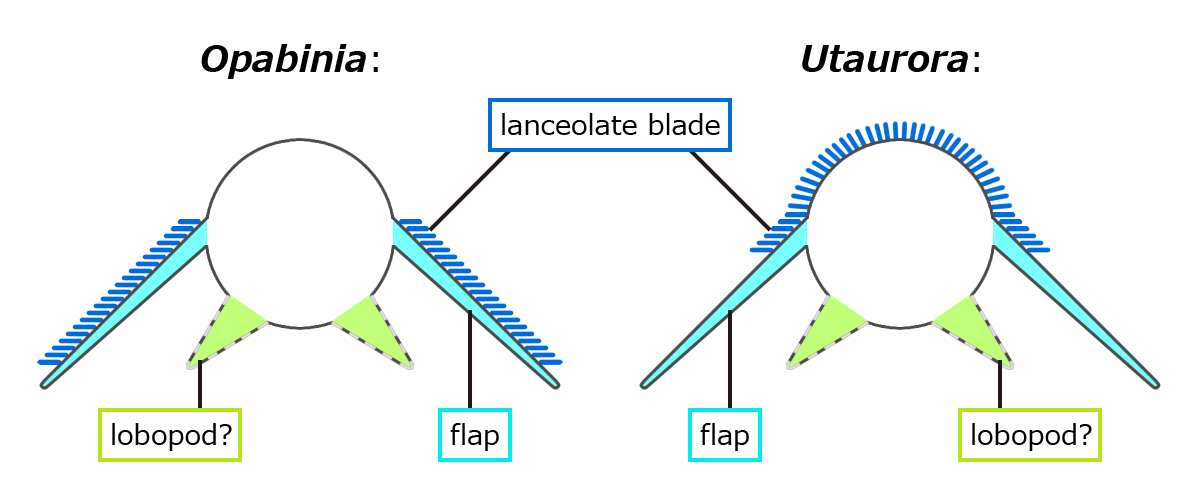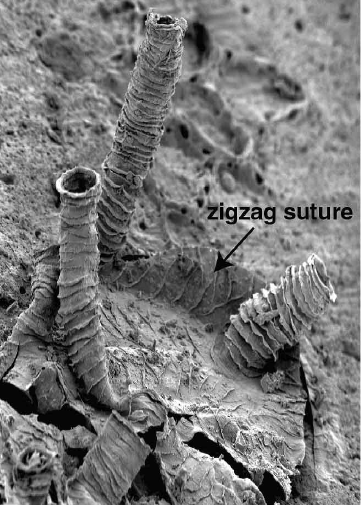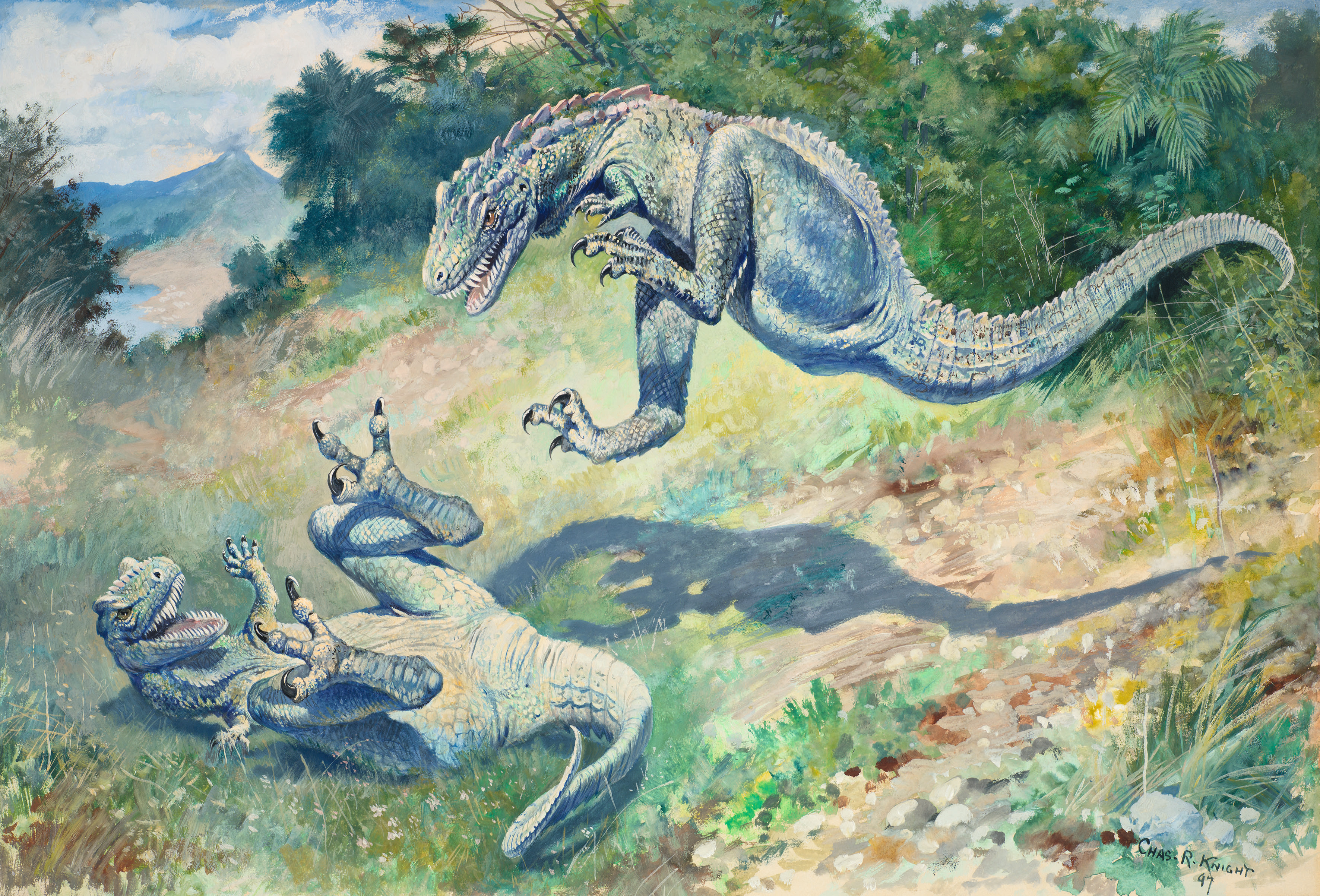|
Mieridduryn
''Mieridduryn'' is a genus of dinocaridid (a group of arthropods now extinct) that lived during the Middle Ordovician of what is now the United Kingdom. This animal was described in 2022 based on a singular fossil found in Castle Bank, a Burgess shale type lagerstätte located in the country of Wales Wales ( ) is a Countries of the United Kingdom, country that is part of the United Kingdom. It is bordered by the Irish Sea to the north and west, England to the England–Wales border, east, the Bristol Channel to the south, and the Celtic .... ''Mierridduryns affinities (relation to other arthropods) are somewhat uncertain, with two opinions currently being favored. Taxonomy and research history The genus name is a composite of two Welsh language, Welsh words; ''wikt:mieri, mieri'' and ''wikt:drwyn, duryn'', which means "bramble snout". The species name ''bonniae'' is named after Bonnie Douel, the fossil site owners' niece; the family heavily supported the research on ... [...More Info...] [...Related Items...] OR: [Wikipedia] [Google] [Baidu] |
Opabiniidae
Opabiniidae is an extinct family of marine stem-arthropods. Its type and best-known genus is ''Opabinia''. It also contains ''Utaurora, and Mieridduryn''. Opabiniids closely resemble radiodonts, but their frontal appendages were basally fused into a proboscis. Opabiniids also distinguishable from radiodonts by setal blades covering at least part of the body flaps and serrated caudal rami. History of study Opabiniidae was named by Charles Doolittle Walcott in 1912, alongside its type species ''Opabinia''. Walcott interpreted Opabiniidae as a family of anostracan crustaceans, most closely related to Thamnocephalidae. ''Opabinia'' was restudied in the 1970s, and reinterpreted as a stranger animal. Stephen Jay Gould referred to ''Opabinia'' as a "weird wonder", and an illustration of ''Opabinia'' prompted laughter when it was first revealed at a paleontological conference. In 2022, more opabiniids were discovered. That being ''Utaurora'', and '' Mieridduryn''. '' Myoscolex'' f ... [...More Info...] [...Related Items...] OR: [Wikipedia] [Google] [Baidu] |
Castle Bank
Castle Bank is a fossil deposit in Wales that is 462 million years old and dates from the middle Ordovician period when Mid Wales was covered by an ocean basin. Fossil discoveries When 2020 COVID-19 lockdowns prevented Llandrindod residents and researchers for Amgueddfa Cymru – Museum Wales, Joe Botting and Lucy Muir, from travelling, they reinvestigated a site they had discovered a decade earlier in a nearby sheep field. They had failed to find the site interesting at the time because it was just a 10-meter-wide quarry. More careful examination has revealed an exceptional find among fossils. So far, 170 species have been found, among them more than 30 panarthropods and what resembles a marine relative of insects. Being from the middle Ordovician, the fossils coincide with the Great Ordovician Biodiversification Event. What makes these fossils differerent from those found in places such as the Cambrian fossils of the Burgess Shale The Burgess Shale is a fossil-bearing de ... [...More Info...] [...Related Items...] OR: [Wikipedia] [Google] [Baidu] |
Lagerstätte
A Fossil-Lagerstätte (, from ''Lager'' 'storage, lair' '' Stätte'' 'place'; plural ''Lagerstätten'') is a sedimentary deposit that preserves an exceptionally high amount of palaeontological information. ''Konzentrat-Lagerstätten'' preserve a high concentration of fossils, while ''Konservat-Lagerstätten'' offer exceptional fossil preservation, sometimes including preserved soft tissues. ''Konservat-Lagerstätten'' may have resulted from carcass burial in an anoxic environment with minimal bacteria, thus delaying the decomposition of both gross and fine biological features until long after a durable impression was created in the surrounding matrix. ''Fossil-Lagerstätten'' spans geological time from the Neoproterozoic era to the present. Worldwide, some of the best examples of near-perfect fossilization are the Cambrian Maotianshan shales and Burgess Shale, the Ordovician Soom Shale, the Silurian Waukesha Biota, the Devonian Hunsrück Slates and Gogo Formation, the Ca ... [...More Info...] [...Related Items...] OR: [Wikipedia] [Google] [Baidu] |
Euarthropods
Arthropods ( ) are invertebrates in the phylum Arthropoda. They possess an exoskeleton with a cuticle made of chitin, often mineralised with calcium carbonate, a body with differentiated ( metameric) segments, and paired jointed appendages. In order to keep growing, they must go through stages of moulting, a process by which they shed their exoskeleton to reveal a new one. They form an extremely diverse group of up to ten million species. Haemolymph is the analogue of blood for most arthropods. An arthropod has an open circulatory system, with a body cavity called a haemocoel through which haemolymph circulates to the interior organs. Like their exteriors, the internal organs of arthropods are generally built of repeated segments. They have ladder-like nervous systems, with paired ventral nerve cords running through all segments and forming paired ganglia in each segment. Their heads are formed by fusion of varying numbers of segments, and their brains are formed by fusion ... [...More Info...] [...Related Items...] OR: [Wikipedia] [Google] [Baidu] |
Dinocaridida
DinocarididaGreek for ''deinos'' "terrible" and Latin for ''caris'' "crab" – sometimes informally spelt Dinocarida, but the second 'id' is linguistically correct – see is a proposed fossil taxon of basal arthropods, which flourished during the Cambrian period and survived up to Early Devonian. Characterized by a pair of frontal appendages and series of body flaps, the name of Dinocaridids (Greek for ''deinos'' "terrible" and Latin for ''caris'' "crab") refers to the suggested role of some of these members as the largest marine predators of their time. Dinocaridids are occasionally referred to as the 'AOPK group' by some literatures, as the group composed of Radiodonta (''Anomalocaris'' and relatives), Opabiniidae (''Opabinia'' and relatives), and the "gilled lobopodians" ''Pambdelurion'' and Kerygmachelidae. It is most likely paraphyletic, with Kerygmachelidae and ''Pambdelurion'' more basal than the clade compose of Opabiniidae, Radiodonta and other arthropods. Anatomy D ... [...More Info...] [...Related Items...] OR: [Wikipedia] [Google] [Baidu] |
Arthropod
Arthropods ( ) are invertebrates in the phylum Arthropoda. They possess an arthropod exoskeleton, exoskeleton with a cuticle made of chitin, often Mineralization (biology), mineralised with calcium carbonate, a body with differentiated (Metamerism (biology), metameric) Segmentation (biology), segments, and paired jointed appendages. In order to keep growing, they must go through stages of moulting, a process by which they shed their exoskeleton to reveal a new one. They form an extremely diverse group of up to ten million species. Haemolymph is the analogue of blood for most arthropods. An arthropod has an open circulatory system, with a body cavity called a haemocoel through which haemolymph circulates to the interior Organ (anatomy), organs. Like their exteriors, the internal organs of arthropods are generally built of repeated segments. They have ladder-like nervous systems, with paired Anatomical terms of location#Dorsal and ventral, ventral Ventral nerve cord, nerve cord ... [...More Info...] [...Related Items...] OR: [Wikipedia] [Google] [Baidu] |
Darriwilian
The Darriwilian is the upper stage of the Middle Ordovician. It is preceded by the Dapingian and succeeded by the Upper Ordovician Sandbian Stage. The lower boundary of the Darriwilian is defined as the first appearance of the graptolite species ''Undulograptus austrodentatus'' around million years ago. It lasted for about 10.8 million years until the beginning of the Sandbian around million years ago. This stage of the Ordovician was marked by the beginning of the Andean-Saharan glaciation. Naming The name Darriwilian is derived from Darriwil, a parish in County of Grant, Victoria (Australia). The name was proposed in 1899 by Thomas Sergeant Hall. GSSP The GSSP of the Darriwilian is the Huangnitang Section () near the village Huangnitang, 3.5 km southwest of Changshan County Town (Zhejiang, China). It is an outcrop of the Ningkuo Formation, consisting of mainly black shale. The lower boundary of the Darriwilian is defined as the first appearance datum of the graptolite ... [...More Info...] [...Related Items...] OR: [Wikipedia] [Google] [Baidu] |
Gilwern
Gilwern is a village within the Brecon Beacons National Park in Monmouthshire, Wales. Historically in Brecknockshire, it extends to either side of the River Clydach on the south side of the Usk valley. Its position beside the Monmouthshire and Brecon Canal led to it being an important industrial centre at one time. Location Gilwern is a village historically in Breconshire now in Monmouthshire about west of Abergavenny, close to where the A40 trunk road and the A465 Heads of the Valleys road meet. The River Usk and the Monmouthshire and Brecon Canal are close to the village. Gilwern Hill lies to the south of the village. It is partly tree-clad and has a mast on top. The name of the village translates from the Welsh ''Y Gilwern'' (from ''cil-gwern'') as "the recess (or bend) of the alders", probably a reference to its position at the point where the Clydach Gorge opens out into the Usk Valley and the River Clydach flows into a sharp bend in the River Usk. The village is ... [...More Info...] [...Related Items...] OR: [Wikipedia] [Google] [Baidu] |
Graptolite
Graptolites are a group of colonial animals, members of the subclass Graptolithina within the class Pterobranchia. These filter-feeding organisms are known chiefly from fossils found from the Middle Cambrian ( Miaolingian, Wuliuan) through the Lower Carboniferous ( Mississippian). A possible early graptolite, ''Chaunograptus'', is known from the Middle Cambrian. Recent analyses have favored the idea that the living pterobranch '' Rhabdopleura'' represents an extant graptolite which diverged from the rest of the group in the Cambrian. Fossil graptolites and ''Rhabdopleura'' share a colony structure of interconnected zooids housed in organic tubes (theca) which have a basic structure of stacked half-rings (fuselli). Most extinct graptolites belong to two major orders: the bush-like sessile Dendroidea and the planktonic, free-floating Graptoloidea. These orders most likely evolved from encrusting pterobranchs similar to ''Rhabdopleura''. Due to their widespread abundance, pl ... [...More Info...] [...Related Items...] OR: [Wikipedia] [Google] [Baidu] |
Biostratigraphy
Biostratigraphy is the branch of stratigraphy which focuses on correlating and assigning relative ages of rock strata by using the fossil assemblages contained within them.Hine, Robert. "Biostratigraphy." ''Oxford Reference: Dictionary of Biology'', 8th ed., Oxford University Press, 2019. The primary objective of biostratigraphy is ''correlation'', demonstrating that a particular horizon in one geological section represents the same period of time as another horizon at a different section. Fossils within these strata are useful because sediments of the same age can look completely different, due to local variations in the sedimentary environment. For example, one section might have been made up of clays and marls, while another has more chalky limestones. However, if the fossil species recorded are similar, the two sediments are likely to have been laid down around the same time. Ideally these fossils are used to help identify biozones, as they make up the basic biostratigraphy ... [...More Info...] [...Related Items...] OR: [Wikipedia] [Google] [Baidu] |
Paleoart
Paleoart (also spelled palaeoart, paleo-art, or paleo art) is any original artistic work that attempts to depict prehistoric life according to scientific evidence. Ansón, Fernández & Ramos (2015) pp. 28–34. Works of paleoart may be representations of fossil remains or imagined depictions of the living creatures and their ecosystems. While paleoart is typically defined as being scientifically informed, it is often the basis of depictions of prehistoric animals in popular culture, which in turn influences public perception of and fuels interest in these organisms. The word paleoart is also used in an informal sense as a name for prehistoric art, most often cave paintings. The term "paleoart"–which is a compound of ''paleo'', the Ancient Greek word for "old", and "art"–was introduced in the late 1980s by Mark Hallett for art that depicts subjects related to paleontology, Hallett (1987) pp. 97–113. but is considered to have originated as a visual tradition in early 1800s ... [...More Info...] [...Related Items...] OR: [Wikipedia] [Google] [Baidu] |
Grade (taxonomy)
A grade is a taxon united by a level of morphology (biology), morphological or physiological complexity. The term was coined by British biologist Julian Huxley, to contrast with clade, a strictly Phylogenetics, phylogenetic unit. Phylogenetics The concept of evolutionary grades arises in the context of phylogenetics: the study of the evolutionary history and relationships among or within groups of organisms. These relationships are determined by Computational phylogenetics, phylogenetic inference methods that focus on observed heritable traits, such as DNA sequences, protein amino acid sequences, or Morphology (biology), morphology. The result of such an analysis is a phylogenetic tree—a diagram containing a hypothesis of relationships that reflects the evolutionary history of a group of organisms. Definition of an evolutionary grade An Evolution, evolutionary grade is a group of species united by morphology (biology), morphological or physiology, physiological traits, that ha ... [...More Info...] [...Related Items...] OR: [Wikipedia] [Google] [Baidu] |








